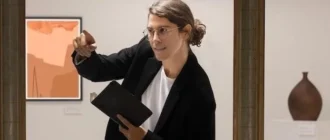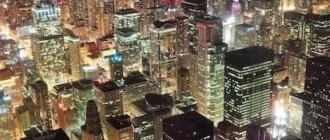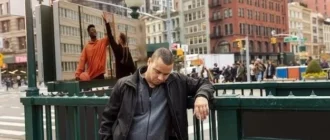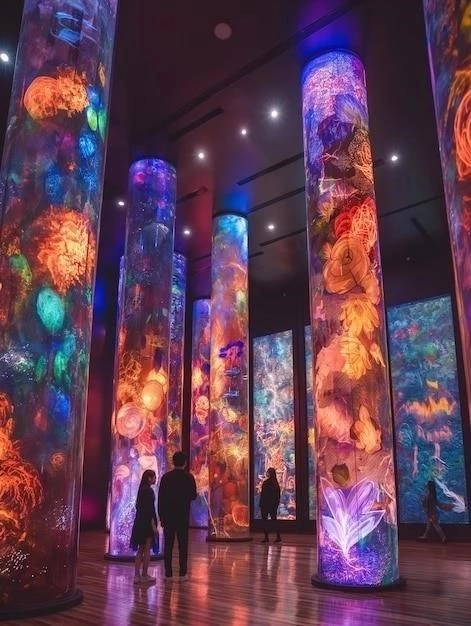History and Evolution of New York Fashion Week
New York Fashion Week, held twice yearly, emerged in 1943 as “Press Week,” a strategic move by publicist Eleanor Lambert to rival Parisian fashion dominance during World War II. Initially showcasing American designers, it gradually evolved into a global spectacle, with the Council of Fashion Designers of America (CFDA) assuming organization in 1993.

Significance in the Global Fashion Industry
New York Fashion Week (NYFW) stands as a cornerstone of the global fashion industry, wielding significant influence and impact. Its stature is deeply intertwined with New York City’s image as a global hub for commerce, art, and culture, amplifying its significance on the world stage.
Firstly, NYFW serves as a crucial platform for designers, both established and emerging, to unveil their collections to a global audience of buyers, media, and fashion enthusiasts. This exposure is essential for securing orders, building brand recognition, and shaping future trends. The event attracts significant media coverage, generating billions of impressions worldwide and solidifying its role as a trendsetter for the upcoming seasons.
Secondly, NYFW’s impact extends beyond the realm of fashion, contributing significantly to New York City’s economy. The event generates substantial revenue through tourism, hospitality, and retail sectors, reinforcing the city’s image as a global fashion capital.
Furthermore, NYFW holds immense cultural significance, reflecting the dynamism and diversity of American fashion. It provides a stage for designers from diverse backgrounds and aesthetics, showcasing the inclusivity and innovative spirit of American design. This melting pot of creativity further cements NYFW’s position as a vital platform for cultural exchange and artistic expression.
In conclusion, New York Fashion Week is not merely a fashion event; it is a global phenomenon that shapes trends, drives the industry forward, and contributes significantly to both the cultural and economic landscape. Its continued influence is a testament to the enduring power of fashion and its capacity to captivate, inspire, and shape the world around us.
The Bi-Annual Format: February and September Editions
New York Fashion Week unfolds bi-annually, gracing the city with its presence each February and September. This strategic scheduling aligns with the fashion industry’s seasonal rhythm, providing designers with a platform to unveil their collections months ahead of the retail season.
The February edition showcases the Fall/Winter collections, offering a glimpse into the upcoming trends for the colder months. Designers unveil luxurious outerwear, cozy knitwear, and statement pieces designed to combat the chill with style. This edition sets the tone for the fall season, influencing everything from color palettes to silhouette choices.
In contrast, the September edition heralds the arrival of spring and summer, presenting the Spring/Summer collections. Designers embrace lightness and vibrancy, showcasing flowing fabrics, vibrant hues, and airy silhouettes. This edition sets the stage for warmer days, influencing trends in resort wear, swimwear, and breezy everyday attire.
This bi-annual format is crucial for maintaining a consistent dialogue between designers, buyers, and the media. It allows for a structured unveiling of new collections, facilitates order placements well in advance, and ensures that the industry remains in sync with the ever-evolving fashion calendar. The anticipation and excitement surrounding each edition solidify New York Fashion Week’s position as a pivotal event in the global fashion calendar.

Key Participants: Designers, Models, and Influencers
New York Fashion Week (NYFW) thrives on a dynamic synergy of key participants, each playing a crucial role in shaping its spectacle and impact. At the forefront stand the designers, the creative minds behind the collections captivating the world’s attention. From established fashion houses to emerging talents, they present their artistic visions, pushing boundaries and setting trends for seasons to come.
Bringing these designs to life on the runway are the models, embodying the spirit of each collection with their poise and presence. These individuals, often scouted globally, play a crucial role in conveying the nuances of each garment, their movements a carefully choreographed dance of style and attitude.
Beyond the runway, a powerful force emerges in the form of influencers. This group, encompassing fashion editors, bloggers, stylists, and social media personalities, wield significant sway in shaping perceptions and dictating trends. Their presence at NYFW, capturing and disseminating their experiences through various media platforms, amplifies the event’s reach far beyond the confines of the runway, influencing consumer desires and solidifying NYFW’s position as a global fashion authority.
This intricate interplay of designers, models, and influencers forms the lifeblood of New York Fashion Week, each participant contributing to the captivating tapestry of creativity, commerce, and cultural influence that defines this biannual spectacle.
Runway Shows: Unveiling New Collections
Runway shows stand as the pulsating heart of New York Fashion Week, electrifying moments where creativity ignites the senses and sets the fashion world ablaze. These meticulously orchestrated spectacles, held in iconic venues and intimate studios alike, serve as the grand stage for designers to unveil their latest creations to an eager audience of buyers, media, and industry elite.
Each runway show is a meticulously crafted narrative, a symphony of light, music, and movement meticulously designed to transport the audience into the heart of the designer’s vision. Models become living embodiments of the garments, their every stride and gesture a calculated expression of the collection’s essence.
The atmosphere crackles with anticipation as photographers capture each look with precision, their images instantly disseminated across global platforms, igniting immediate reactions and shaping perceptions of upcoming trends. The buzz generated by these shows reverberates throughout the industry, influencing everything from retail buying decisions to consumer desires.
From established fashion houses delivering awe-inspiring spectacles to emerging designers making their mark with bold statements, the runway shows of New York Fashion Week stand as pivotal moments in the fashion calendar. They are a testament to the power of creativity, the allure of beauty, and the enduring influence of the runway in shaping the future of fashion.

Presentations and Events: Beyond the Catwalk
While runway shows reign supreme, New York Fashion Week extends far beyond the confines of the catwalk, encompassing a diverse array of presentations and events that enrich the industry landscape. These alternative formats offer designers unique avenues for showcasing their collections, fostering closer interactions, and engaging audiences in immersive experiences.
Intimate presentations provide a closer look at the craftsmanship and detail woven into each garment. Static presentations allow for extended viewing, while dynamic presentations breathe life into the clothing, with models moving freely through the space, interacting with guests, and offering a more personal and engaging experience.
Beyond presentations, the week is abuzz with exclusive events, from intimate cocktail parties and lavish galas to panel discussions and workshops. These gatherings foster crucial connections within the industry, facilitating networking opportunities, sparking collaborations, and providing invaluable insights into the business of fashion.
These presentations and events, occurring alongside the high-octane energy of the runway, contribute to a multi-faceted experience that defines New York Fashion Week, demonstrating its evolution beyond a mere showcase of garments into a vibrant hub of creativity, commerce, and dynamic exchange.
The Business of NYFW: Orders and Sales
Beneath the dazzling spectacle of runway shows and exclusive events lies the vital pulse of New York Fashion Week: the business of fashion. NYFW serves as a global marketplace, a critical junction where creativity converges with commerce, driving the industry forward. It’s here that the captivating allure of the runway translates into tangible orders and sales, fueling the industry’s intricate ecosystem.
Buyers from renowned department stores, influential boutiques, and online retailers flock to NYFW, their discerning eyes seeking the next “it” pieces to grace their shelves. Showrooms transform into bustling hubs of activity, where designers present their collections up close, allowing buyers to meticulously assess the quality, craftsmanship, and commercial viability of each garment.
The energy is palpable as negotiations unfold, orders are placed, and the wheels of the fashion industry are set in motion. The success of a collection, particularly for emerging designers, hinges on securing orders from key buyers, providing the financial foundation for future growth and solidifying their place within the competitive market.
New York Fashion Week, therefore, transcends the realm of mere spectacle, acting as a vital economic engine, driving sales, forging partnerships, and shaping the commercial trajectory of the fashion industry. It’s a testament to the symbiotic relationship between creativity and commerce, where the allure of design translates into tangible business success.
Media Coverage and Public Attention
New York Fashion Week commands an unparalleled level of media coverage and public attention, transforming the city into a global epicenter of the fashion world. The event’s every detail, from the runway spectacles to the street style outside the venues, is meticulously documented and disseminated globally, amplifying its reach and influence far beyond those physically present.
Renowned fashion journalists, photographers, bloggers, and influencers descend upon New York City, eager to capture the season’s trends, the standout collections, and the captivating moments that define NYFW. Their coverage, spanning print, online platforms, and social media channels, shapes public perception, fuels consumer desire, and elevates NYFW to a cultural phenomenon.
The rise of social media has further democratized access to the event, allowing fashion enthusiasts worldwide to engage with NYFW in real-time. From live-streamed runway shows and behind-the-scenes glimpses to street style snapshots and influencer commentary, the digital realm becomes saturated with NYFW content, fostering a sense of global participation and amplifying the event’s impact on consumer trends.
This intense media spotlight and public fascination are testaments to the enduring allure of New York Fashion Week, solidifying its position as a must-see event that captivates, inspires, and ultimately shapes the global fashion landscape.
Impact on Trends and Consumer Behavior
New York Fashion Week exerts a powerful ripple effect on global fashion trends and consumer behavior, shaping tastes, influencing purchasing decisions, and setting the sartorial stage for seasons to come. As a leading platform for creative expression and industry innovation, NYFW dictates the trends that will soon permeate every level of the fashion ecosystem.
From the color palettes and silhouettes showcased on the runways to the innovative fabrics and styling techniques employed by designers, the influence of NYFW is undeniable. Fashion publications meticulously dissect each collection, identifying emerging trends and disseminating these insights to a global audience.
Consumers, bombarded with imagery and information from the event, find themselves inspired by the trends showcased, influencing their own purchasing choices. High-street retailers, attuned to these shifts in consumer desire, quickly adapt, offering interpretations of runway trends at accessible price points, further solidifying the influence of NYFW on the everyday wardrobe.
This cyclical process, from runway inspiration to consumer adoption, underscores the significant role New York Fashion Week plays in shaping global fashion trends and influencing consumer behavior, confirming its position as a driving force within the fashion industry.
The Future of NYFW: Sustainability and Innovation
As the fashion industry grapples with its environmental and social impact, the future of New York Fashion Week is inextricably linked to the embrace of sustainability and innovation. NYFW stands at a pivotal crossroads, challenged to redefine its practices and embrace a more responsible and forward-thinking approach.
A growing consciousness surrounding sustainable practices is permeating the industry, with designers increasingly incorporating eco-conscious materials, ethical production processes, and circularity into their brand ethos. NYFW, as a global stage, has the potential to champion these initiatives, providing a platform for designers at the forefront of sustainable fashion to showcase their collections and inspire wider industry adoption.
Furthermore, the future of NYFW will be shaped by technological advancements and innovative formats. Digital presentations, virtual reality experiences, and interactive platforms offer exciting possibilities for expanding the event’s reach while minimizing its environmental footprint. Embracing these technological advancements will be crucial for engaging a new generation of digitally-savvy consumers and ensuring the event’s continued relevance.
New York Fashion Week has the opportunity to evolve into a beacon of sustainability and innovation, leading the industry towards a more responsible and forward-thinking future. By embracing ethical practices, championing emerging technologies, and fostering a dialogue around conscious consumption, NYFW can solidify its position as a driving force for positive change within the global fashion landscape.

Criticisms and Challenges Faced by NYFW
Despite its enduring prominence and influence, New York Fashion Week is not without its critics and faces inherent challenges in a rapidly evolving industry. Scrutiny often centers on issues of exclusivity, sustainability, and the increasing pressure to constantly innovate within a traditionally structured system.
One persistent criticism revolves around the event’s exclusivity, with access to runway shows and key events often limited to industry insiders, high-profile buyers, and media personnel. This exclusivity can overshadow emerging talent and limit accessibility for a broader audience, raising questions about inclusivity and representation within the industry.
Furthermore, the environmental impact of NYFW, particularly its contribution to waste generation and excessive consumption, has drawn increasing criticism. From the production and transportation of collections to the ephemeral nature of fashion trends, the industry’s environmental footprint is under intense scrutiny, prompting calls for greater sustainability and ethical practices.
As NYFW navigates the future, addressing these criticisms and adapting to the changing landscape of the fashion industry will be crucial for its continued relevance. Embracing greater inclusivity, adopting sustainable practices, and exploring innovative formats will be essential for ensuring that NYFW remains a vibrant and influential platform for the future of fashion.
New York City as the Backdrop for Fashion Week
New York City, with its inimitable energy, vibrant cultural tapestry, and iconic skyline, serves as the quintessential backdrop for New York Fashion Week, its spirit inextricably intertwined with the energy of the event. The city’s streets transform into catwalks, its iconic landmarks provide breathtaking backdrops for shows and presentations, and its palpable energy fuels the creative spirit of the week.
From the gritty charm of the Meatpacking District to the elegant grandeur of the Upper East Side, each neighborhood lends its unique character to the events of NYFW. The city’s dynamism is reflected in the diverse range of designers, models, and industry professionals who converge upon New York, their creativity ignited by the city’s inspiring backdrop.
Beyond the official venues, the streets of New York City come alive with street style, a captivating display of personal expression and sartorial flair. Photographers capture the latest trends as fashion enthusiasts, influencers, and industry insiders navigate the city, transforming sidewalks into impromptu runways.
This vibrant synergy between New York Fashion Week and its namesake city elevates the event beyond a mere industry gathering, transforming it into a celebration of creativity, culture, and urban dynamism. New York City, with its inimitable allure, solidifies its position as the ultimate stage for the world of fashion to converge and captivate.










